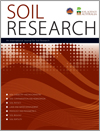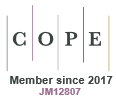SR23192Polymer-coated urea applied at one-time mechanical topdressing increases nitrogen use efficiency and rice yield in the cold area
Urea applied to agricultural fields volatilises as ammonia, which results in huge wastage. This study showed that polymer-coated urea can reduce ammonia volatilisation from urea, lower the pH of paddy water, improve urea utilisation, and ultimately increase rice yield. This helps to reduce labour as well as environmental pollution from over-application of fertilisers.





